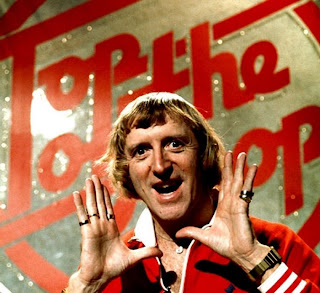The purpose of music videos in the early days of sound-filmmaking was to showcase the singer or band to its target audience, often shown at the cinema as part of a full programme with a newsreel. However, these videos showcasing the likes of Bing Crosby were to be out-performed by the changing times of music and the younger generations who started the Rock N Roll era.
In the 1960’s the idea of music videos was established using the Scopitone in France. It was a massive success in France, and mid-1965 over 1000 Scopitone machines were installed overseas in the USA. The USA started to make videos containing unnatural colours and fantasy worlds. The concept of Voyeurism was often included in the French and American videos, and is still seen today in music videos made for R&B, Rap, Hip-Hop and Club and Dance songs shown on the MTV Dance channel.
As music tastes changed in the 1960’s, when youths were more attracted to The Beatles and Elvis Presley, music video companies had to change the way they showcased their stars. Music videos were shot for viewing on television, and the age of music films started from the foundations of 1940s musicals. Then came along the age of music video programmes for television viewers, especially with the USA’s answer to The Beatles; The Monkees were given a television programme slot where they performed their music and starred in a soap-style programme. This concept has been copied and used towards the success of the late 1990’s and early 21st Century kid’s sensation S Club 7, who appeared in soap-style programmes following their fictional lives whilst on tour, which was shown on Saturday mornings on CBBC.
The 1980s saw the rise of the highly camp MTV videos, with bright vibrant colours and lots of makeup and weirdly designed costumes. Duran Duran’s Rio and Wild Boys videos are noted for this new craze. The use of exotic locations and high quality camera shots increased during the 1980s, whilst the voyeurism of females and the representation of beautiful half-naked women was continued. MTV was established mid-1980s and VH1 was established for the older, more matured audience, showcasing the more borderline-pornographic videos. MTV later went on to not only broadcast music videos but to show music-related television programmes such as Unplugged and the lifestyle-orientated world began. Also, from January 1964 to July 2006 the BBC's programme Top of the Pops aired on BBC 1, and the BBC 2 version Top of the Pops 2 (late 1990s early 2000s) looked back at the performances and videos from the past, mostly from the 1970s and 1980s. The BBC programme offered British viewers the chance to view their favourite bands and artists on television when there were only two or three television programmes in the country.
Whilst the music promotional video is more of a recent and highly successful relationship between the music and moving images, it was the main component in reviving the music industry, especially in improving the sales of music. Together with MTV (Music-Television) and the new age of personal listening via the Compact Disc (CD), and moving on from the 33.5 rpm vinyl records of the 1970s (EP) and the cassette tapes of the 1980s, music videos became a key part of the marketing and development of a band’s single and brand image from the later stages of the 1980s onwards. However, in recent times the new age of illegal downloading of music via the Internet has had a major impact on the music industry, so a new form of music videos or marketing is eagerly awaited to revive the music industry. YouTube, an online subscription service available to all Internet users and continuing the age of Video-On-Demand, has been an example of the music industry’s decline of the 21st Century.



